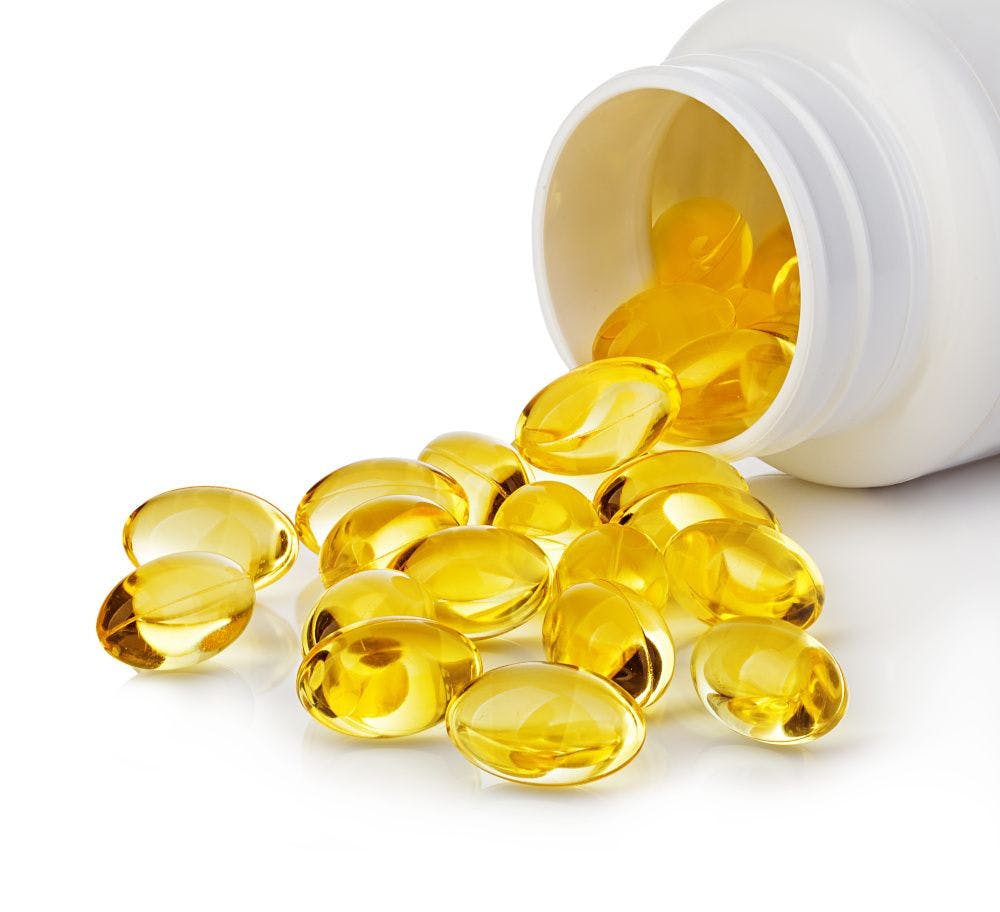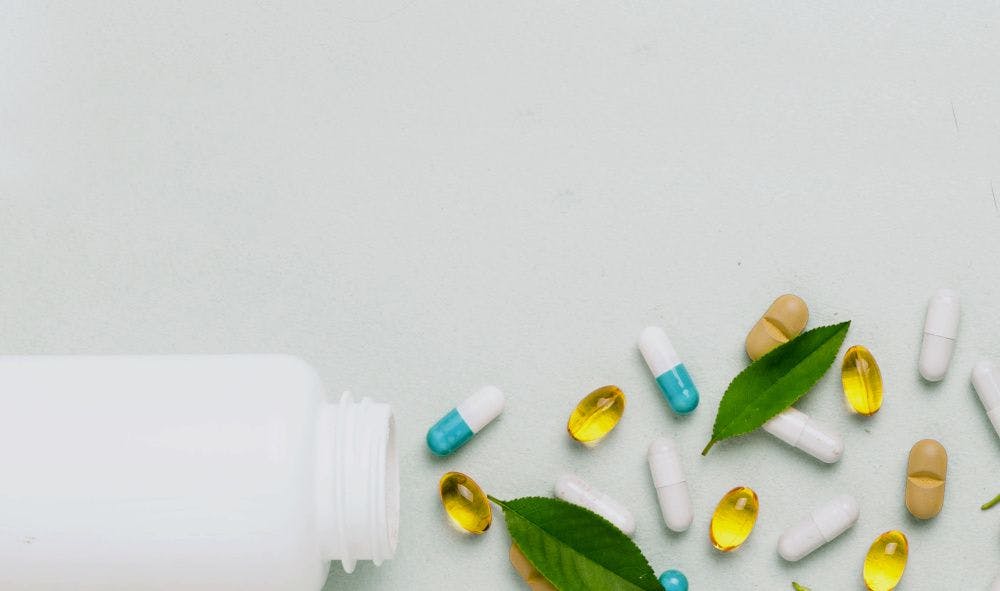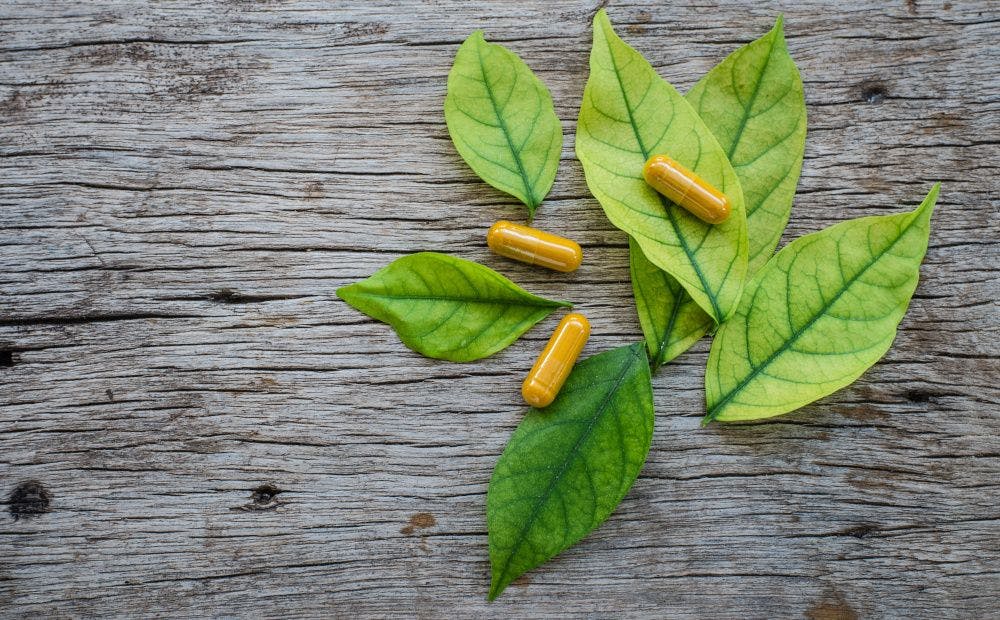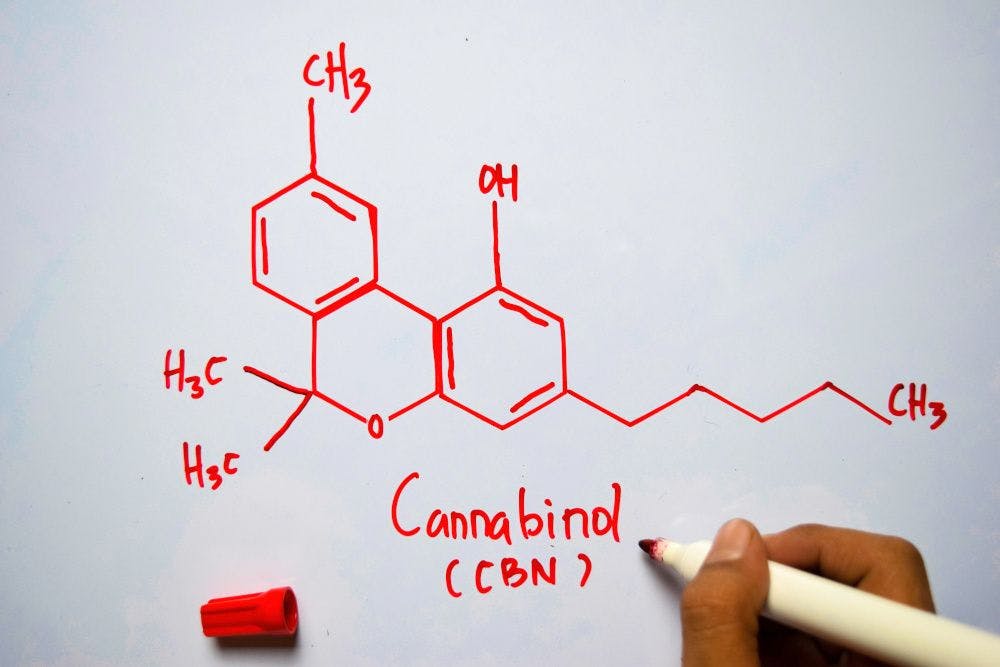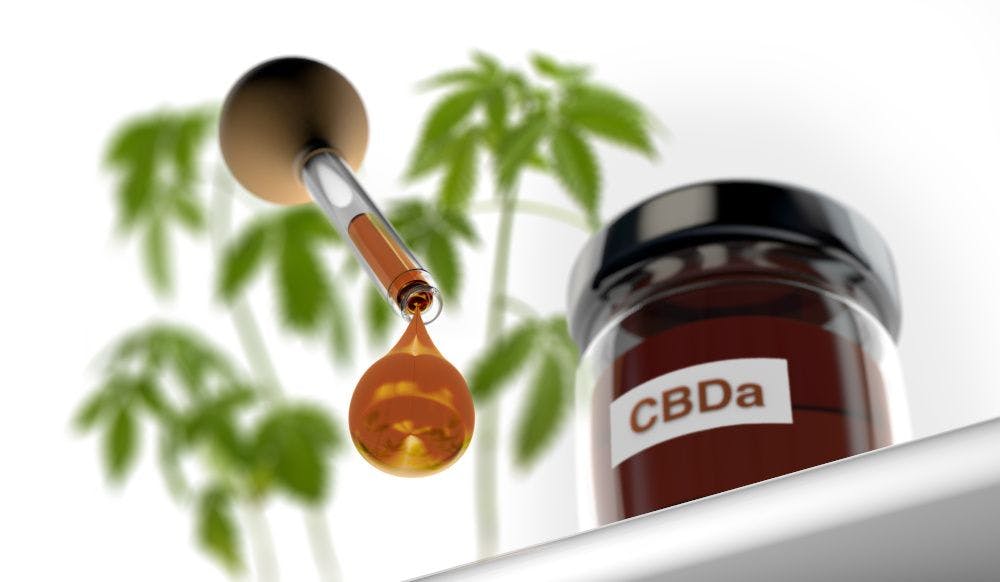Probiotic benefits extend beyond the gut
The more attention our microbiomes get from the research community, the more benefits consumers may one day reap, and the more inspiration wellness brands can tap for probiotic product development.
Photo © Antishock - Stock.adobe.com

According to a recent Grand View Research report1, the global probiotic market cracked the $58 billion mark in 2021 and looks set to grow at a compound annual rate of 7.5% from now through 2030 at the least.
To the extent that these live-and-active ingredients have achieved such growth, they largely have their reputations as “good gut bugs”—emphasis on the gut—to thank.
And that’s a reasonable determinant, wagers Kalyanam Nagabhushanam, PhD, president, R&D, Sabinsa Corp. (East Windsor, NJ). After all, he says, “It’s difficult to separate probiotic benefits from the gut because everything starts there.”
But—and here’s the clincher—“It doesn’t stop there,” Nagabhushanam continues. “The composition of the gut microbiome affects all major bodily systems through continuous bidirectional communication between the gut microbiota and other body organs.”
In other words, our good gut bugs talk with our entire selves. And the “impactful informational exchanges” they have, Nagabhushanam adds, form the basis for all those “gut-organ axes”—gut-brain, gut-liver, gut-heart, gut-skin, et al.—attracting so much attention these days.
It’s a good thing they are, because the more attention our microbiomes get from the research community, the more benefits consumers may one day reap, and the more inspiration wellness brands can tap for probiotic product development.
Holistic Help
Probiotics’ whole-health appeal doesn’t surprise Kristin Wilhoyte, global director of product marketing, Deerland Probiotics & Enzymes (Kennesaw, GA).
“Shoppers increasingly look to probiotics as a means to support holistic wellbeing,” she says, adding that ADM Outside Voice research found 58% of global consumers “perceive a connection” between their gut bacteria’s function and wider aspects of health.
That perception shows how scientifically sophisticated contemporary consumers have become, because—put simply—the gut-body relationship is complex.
As Nagabhushanam explains, “The gastrointestinal metagenome is probably more than 100 times bigger than the human genome itself, and its gut-flora gene products affect multiple organ functions by secreting metabolites that travel to those organs as messengers and executors of the gut microbiota’s will.”
Boiled down, that means that our gut microbiota “wield considerable power in redefining the health of distant organs not in their contact or vicinity,” Nagabhushanam concludes.
And though consumers may not understand the minute details of this interplay, they get the gestalt, and their grasp, Wilhoyte believes, “creates new avenues for probiotic brands and suppliers to meet consumers’ evolving health-and-wellness goals.”
Altered Aspects
Those new avenues start with science, and Richard Day, vice president, medical affairs, health and wellness, ADM (Chicago), notes that the gut-brain axis in particular is a “fascinating area for microbiome research.”
As an example, he cites a recently published randomized, double-blind, placebo-controlled human clinical trial2 that revealed “some intriguing results” around how a 14-strain “microbiome product,” trade-named Bio-Kult, might influence psychological processing and measurements of low mood.
To wit, study subjects who received the multistrain supplement daily exhibited “altered aspects of emotional processing and reward learning, with improvements in mood scores as measured by the PHQ-0 questionnaire,” Day says. Analyses of salivary cortisol and serum C-reactive protein levels also reflected improvements.
“One interesting aspect of this study,” Day adds, “is that researchers saw results in just four weeks. This is significant because similar trials typically occur over longer periods.” He hopes that future studies can build upon the current results; meantime, Deerland—which ADM acquired last year—is already collaborating with King’s College London to “improve our understanding of how these bacteria might influence mood and cognition,” Day says.
Multiple Impacts
Dairy nutrition company Fonterra (Auckland, New Zealand) also wagers that its Lactobacillus rhamnosus probiotic strain LactoB HN001 might improve mental wellbeing “based partly on a study showing that it reduced postnatal stress and anxiety in mothers,” says James Dekker, PhD, Fonterra’s senior research scientist. “Given those findings and increased awareness of the gut-brain axis, we wanted to see if LactoB HN001 had mental-wellness benefits in a general population.”
So guided by the understanding that chronic stress takes a considerable toll on mental health, the team is using an experimental model of chronic stress to elucidate how LactoB HN001 might ameliorate stress’s psychological effects “via a recognized stress pathway that begins in the brain,” Dekker says.
“While we’re still investigating just how it might influence this,” he continues, “it’s intriguing that we’re also seeing hints of involvement from other brain-signaling pathways, suggesting that LactoB HN001 might have multiple gut-brain axis impacts.”
Fonterra researchers also conducted a pilot study to determine if the probiotic produced any significant mental wellness or happiness improvements in participants as measured using the Oxford Happiness Questionnaire. And after 60 days of supplementing with LactoB HN001, Dekker declares, results indicated that the participants felt happier.
“This is exciting and supports previous results showing that LactoB HN001 improves mental wellness,” Dekker says. “Our next steps are to confirm the pilot study’s benefits using a clinical-trial approach while continuing to pursue investigations into just how LactoB HN001 interacts with the host in promoting mental wellness.”
“Double-Protective” Immunity
Just as compelling as probiotics’ mental health potential is their potential to support immunity—and consumers, spurred in part by COVID concerns, appear well aware of that potential.
“Euromonitor’s 2021 Health & Nutrition Survey found that probiotics are among consumers’ top-five ingredients for immunity, along with vitamins B, C, and D, as well as zinc,” notes Antoine VanHove, product manager, Gnosis by Lesaffre (Lille, France). “This awareness has done wonders to expand consumers’ understanding of probiotics, which they might have previously only linked with digestion and gut health.”
Gnosis by Lesaffre helped further that understanding by exploring the immune benefits of its patented Bacillus subtilis strain LifeinU BSCU1 in a double-blind, randomized, placebo-controlled clinical trial.3
Study subjects supplemented with the probiotic or a placebo for the first 10 days of every month during the trial’s four-month course. Results showed that the probiotic group exhibited levels of salivary secretory immunoglobulin A (sIgA) 45% higher than did subjects in the placebo group, while also increasing intestinal sIgA levels by 65% after only 10 days and 87% upon study completion.
SIgA, VanHove explains, “catches toxins and infectious agents, preventing their interaction with the respiratory and intestinal epithelia.” That’s why a sIgA deficiency can weaken the body’s natural defenses and increase infection risk, and it’s why VanHove finds LifeinU BSCU1’s “double-protective effect” on both salivary and intestinal sIgA levels “promising for brands looking to stand out in the immune-health category.”
It’s so promising that Gnosis by Lesaffre is pairing the probiotic with its Lynside immunity prebiotic to achieve “complementary immunity effects,” VanHove says, as the former supports immunity by increasing sIgA levels while the latter supports microbiome diversity.
Inflammation SOS
Vivek Lal, MD, FAAP, and CEO of ResBiotic (Birmingham, AL), also had immune function—and digestion, and respiratory health—in mind when his pulmonary-microbiome lab collaborated with lung-protease and matrix-biology labs at the University of Alabama at Birmingham to explore microbiomal effects on those systems.
“We were interested in the bidirectional interactions between the gut and lungs—the gut-lung axis—at both the physical and chemical levels,” Lal explains, “and our research allowed us to identify precise molecular pathways involved in lung inflammation, and how the microbiome regulates these pathways.”
The product of that research was resB Lung Support, a multistrain blend of probiotics and botanical extracts formulated to “optimize indicative biomarker responses in gut and lung-tissue cells,” Lal says.
The blend’s Lactobacillus plantarum RSB11, Lactobacillus acidophilus RSB12, and Lactobacillus rhamnosus RSB13 strains have clinical evidence for their digestive and immune benefits, Lal claims, while its turmeric complement demonstrates anti-inflammatory properties; its holy basil is a known antioxidant and adaptogen; and its vasaka leaf “is being looked at for bronchodilatory effects.”
And preclinical research does show that the supplement fights key inflammatory markers in the gut and lungs and “can ultimately support lung structure and function,” Lal says. In vitro testing indicates reduced activity of the inflammatory MMP-9 pathway in gut and lung tissue, while in vivo lung-injury models show that oral administration preserved lung structure and reduced neutrophilic inflammation markers.
“We’re conducting clinical studies to test our formulation’s effects in human populations,” Lal adds, “with ongoing clinical trials looking at its effects in healthy people, smokers, and people with asthma.” ResBiotic is also exploring the blend’s impact on quality of life in patients with chronic obstructive pulmonary disease and non–cystic fibrosis bronchiectasis. The team even hopes to test the product in acute-care settings on pneumonia incidence and prognosis.
Meanwhile, the company continues building more probiotic products. “Two I’m particularly excited about are formulations for infants and kids that combine clinically studied probiotic strains with other key nutrients for overall health and immunity,” Lal says. “As a dual board-certified pediatrician and neonatologist, I’m excited to soon offer something to support this age group during what are critical years of development.”
Hand-Picked Probiotic
As that age group…ages, it may find cardiovascular disease (CVD) among the health issues it has to contend with. And here, too, probiotics can help.
A case in point is LPLDL, OptiBiotix Health’s (Heslington, UK) probiotic strain targeting CVD risk.
As Zac Sniderman, OptiBiotix’s North American director of business development, explains, the company began its hunt for LPLDL—a naturally occurring Lactobacillus plantarum strain isolated from vegetable juice—by screening 4,000-plus microbial candidates for metabolic pathways that “could interact with the human body to improve health.”
The company ultimately “hand-picked” LPLDL from the lot thanks to its “uniqueness” as an effective and stable probiotic for reducing high cholesterol and blood pressure levels—“key biomarkers of cardiovascular disease risk,” Sniderman says.
Since its discovery, six publications have described its mechanisms of action—1) reducing bile-salt reabsorption into the liver, 2) absorbing cholesterol into its cell membrane, and 3) enzymatically degrading cholesterol directly—while three separate peer-reviewed publications establish safety and tolerability and showcase statistically significant reductions in multiple CVD-risk biomarkers.
Among those publications is a clinical study4 showing that subjects who consumed 4 billion CFU of LPLDL for six weeks not only experienced significant results compared to placebo after just three weeks—“a major point of differentiation,” Sniderman notes—but also lowered their total, LDL, and non-HDL cholesterol levels 34.6%, 28.4%, and 17.6%, respectively, and cut apolipoprotein B levels by 28.6%.
Looking beyond CVD risk, OptiBiotix has signed agreements with the University of Southampton and the Fondazione Edmund Mach–Centro Ricerca e Innovazione (Trento, Italy) to fund and conduct research examining how its microbiome products might improve sleep, stress, and anxiety. “This is another step in extending our clinically proven products’ application range into large, growing markets where there’s unmet clinical need,” Sniderman declares.
Performance Potential
Though probiotic research has generated exciting results around CVD, inflammation, immunity, and—naturally—gut health, the category’s “full potential to support athletic performance is just now being discovered,” says Lindsey Toth, director, global marketing, Lonza Capsules & Health Ingredients (Basel, Switzerland).
And Lonza’s TWK10 sports probiotic—a Lactobacillus plantarum strain originally derived from Taiwanese kimchi—is the first with clinical proof of its exercise-endurance benefits, she claims.
One 2018 study5 showed both that healthy adults receiving 30 billion and 90 billion CFU of the probiotic saw significantly increased exercise endurance over six weeks relative to placebo, and that the probiotic may exert anti-fatigue effects as indicated by lower lactate and ammonia biomarkers post-exercise. “Interestingly,” Toth notes, “these lower lactate levels suggest that TWK10 may have an effect on reducing muscle damage caused by exercise.”
A clinical study6 published the following year showed that healthy adult males who also supplemented with the probiotic for six weeks exhibited significantly improved exercise performance on a treadmill test compared to placebo. And both studies suggest that the probiotic helps prevent declines in age-related functional performance.
“These functional benefits are thought to result from the ingredient’s ability to modulate gut microbiota and support growth of native Bifidobacteria, which has numerous proven benefits, including supporting fiber digestion, energy metabolism, and essential-vitamin production,7” Toth says. “The latter matters especially to athletes who need to ensure they’re consuming the right nutrients to perform their best.”
Regulating Temptation
And while plenty of athletes are looking for peak performance, most athletic amateurs are happy just to shed pounds.
Yet “an impressive” 28.9% of respondents to FMCG Gurus’ 2021 weight-management survey consider their latest attempts to lose weight unsuccessful, says Camille Binachon, product manager, Lallemand Health Solutions (Mirabel, Canada).
One oft-cited culprit is the ubiquity of highly palatable, highly caloric foods that, coupled with contemporary life’s acute stress, “overstimulate the reward system and lead to compulsive eating,” she continues. But hope lies in the use of probiotics that modulate the brain-gut axis to “regulate the food-reward system,” she says, “making it easier to resist temptation.”
Lallemand Health Solutions’ Lactobacillus rhamnosus HA-114 appeared to effect that modulation in a 12-week, randomized, double-blind, placebo-controlled clinical trial8 highlighting its benefits around the eating behaviors as well as psychological and metabolic parameters observed during calorie restriction.
In the study, the overweight but otherwise healthy adults who received 10-billion-CFU doses of the probiotic daily experienced significant improvements in binge eating, eating control, and food cravings relative to placebo, despite being at a daily caloric deficit of 500 kcal.
“There were also intragroup improvements in food cravings, intense desire to eat, and planning and intention to eat,” Binachon adds. “And since mental health is critical to a weight-reduction program’s success, it’s important to note that participants who took the probiotic saw improvements in their scores for stress, anxiety, and depression between the study’s start and end.”
As far as metabolic measures go, the probiotic appeared to have significant effects on plasma insulin levels, homeostatic model assessments of insulin resistance, and both low-density lipoprotein and triglyceride levels, Binachon says, “demonstrating its benefits to a healthy metabolic profile in overweight participants following a calorie-restricted diet.”
“Consumers know there’s no magic pill to lose weight,” Binachon concludes. “But 21.9% of them globally want to address their weight with supplements, and in a probiotic-focused survey, 30.1% associated probiotics with weight management.”9
Safety First
Results like these deserve enthusiasm and bode well for the sector’s future. But, Jessica Spears, PhD, director of R&D, Bio-Cat Microbials LLC (Shakopee, MN), emphasizes that “while differentiated benefits and efficacy are, of course, our focus in new strain development, we can’t overlook safety. Not all probiotic strains are created equal, and that’s true for efficacy as well as for safety. Neither should be taken for granted.”
To that end, Bio-Cat’s latest peer-reviewed publication10 provides what Spears—a study author—describes as a comprehensive look at the safety of BS50 (ATCC PTA-127287), the company’s Bacillus subtilis probiotic for gastrointestinal support.
Researchers used in silico analyses to screen the organism’s genome for sequences that encode known Bacillus toxins, secondary metabolites, virulence factors, and antibiotic resistance, and assessed its cellular lysates’ effects on the viability and permeability of cultured human intestinal epithelial cells. Results reflect a “robust preclinical safety profile” and indicate no significant health risk to humans, Spears says.
Noting that the study sets a framework of safety for the probiotic right as the company seeks its GRAS status, she also points out that Bio-Cat conducts similar safety and toxicology studies “on every single probiotic product we develop.”
What’s more, the company submits its work to open-access peer-reviewed journals “so that all our published work is indexed in PubMed and freely available to the public,” she maintains. “We want formulators and consumers alike to have access to our safety and efficacy studies and to feel confident that a spore-based probiotic from our catalog is as safe as it is beneficial.”
Coat of Armor
Allied with concerns about safety are those around allergen threats— which, as elsewhere in the wellness industry, is also a “thing” when it comes to probiotics.
Thus, Nutralliance (Yorba Linda, CA), exclusive North American sales and marketing partner for Ildong Bioscience (Korea), broadened its probiotic strain range to include allergen-free options protected by Ildong’s quadruple coating.
“Ildong’s quad-coated strains are what we like to call ‘next-generation probiotics,’” says Ana Maria Cuentas, Nutralliance’s director of probiotics. “Various coating technologies were already circulating, but none showed the improved stability and survivability that Ildong’s patented technology was ultimately able to obtain, prolonging shelf life and improving the organisms’ survival in applications and blends that would otherwise be unmanageable.”
Adding the coating to its allergen-free strains was a natural move for Nutralliance “to provide that same stability and survivability enhancement while continuing to meet market needs in terms of certifications and requirements,” Cuentas says.
So with clinical trials and more than 25 safety and efficacy studies supporting the strains and technology, “Not only can brands and consumers be sure of their quality, safety, and efficacy,” she says; “they can also find high-quality products that meet their allergen-free and clean-label needs.”
And meeting needs—for scientific support, safety, and more—is increasingly the name of the game in the probiotic space. And as Fonterra’s Dekker says, “As probiotic researchers, it’s up to us to answer that need and ensure consumers’ access to live, safe strains that actually do provide specific health benefits.”
References
- Grand View Research report. “Probiotics Market Size, Share & Trends Analysis Report By Product (Probiotic Food & Beverages, Probiotic Dietary Supplements), By Ingredient (Bacteria, Yeast), By End Use, By Distribution Channel, and Segment Forecasts, 2021 – 2030.”
- Baião R et al. “Multispecies probiotic administration reduces emotional salience and improves mood in subjects with moderate depression: a randomised, double-blind, placebo-controlled study.” Psychological Medicine. Published online ahead of print February 7, 2022.
- Lefevre M et al. “Probiotic strain Bacillus subtilis CU1 stimulates immune system of elderly during common infectious disease period: a randomized, double-blind placebo-controlled study." Immune Ageing. Published online December 3, 2015.
- Keleszad E et al. “The cholesterol lowering efficacy of Lactobacillus plantarum ECGC 13110402 in hypercholesterolemic adults: a double-blind, randomized, placebo controlled, pilot human intervention study.” Journal of Functional Foods, vol. 89 (February 2022)
- Huang WC et al. “Effect of Lactobacillus plantarum TWK10 on improving endurance performance in humans.” The Chinese Journal of Physiology, vol. 61, no. 3 (June 2018): 163-170
- Huang WC et al. “Effect of Lactobacillus plantarum TWK10 on exercise physiological adaptation, performance, and body composition in healthy humans.” Nutrients, vol. 11, no. 11 (November 19, 2019): 2836
- Leahy SC et al. “Getting better with Bifidobacteria.” Journal of Applied Microbiology, vol. 98, no. 6 (2005): 1303-1315
- Choi BSY et al. “Lacticaseibacillus rhamnosus HA-114 improves eating behaviors and mood-related factors in adults with overweight during weight loss: a randomized controlled trial.” Nutritional Neuroscience. Published online ahead of print June 17, 2022.
- FMCG Gurus survey. Nutritional supplements survey (2020; 26 countries)
- Brutscher LM et al. “Preclinical safety assessment of Bacillus subtilis BS50 for probiotic and food applications.” Microorganisms, vol. 10, no. 5 (May 17, 2022): 1038
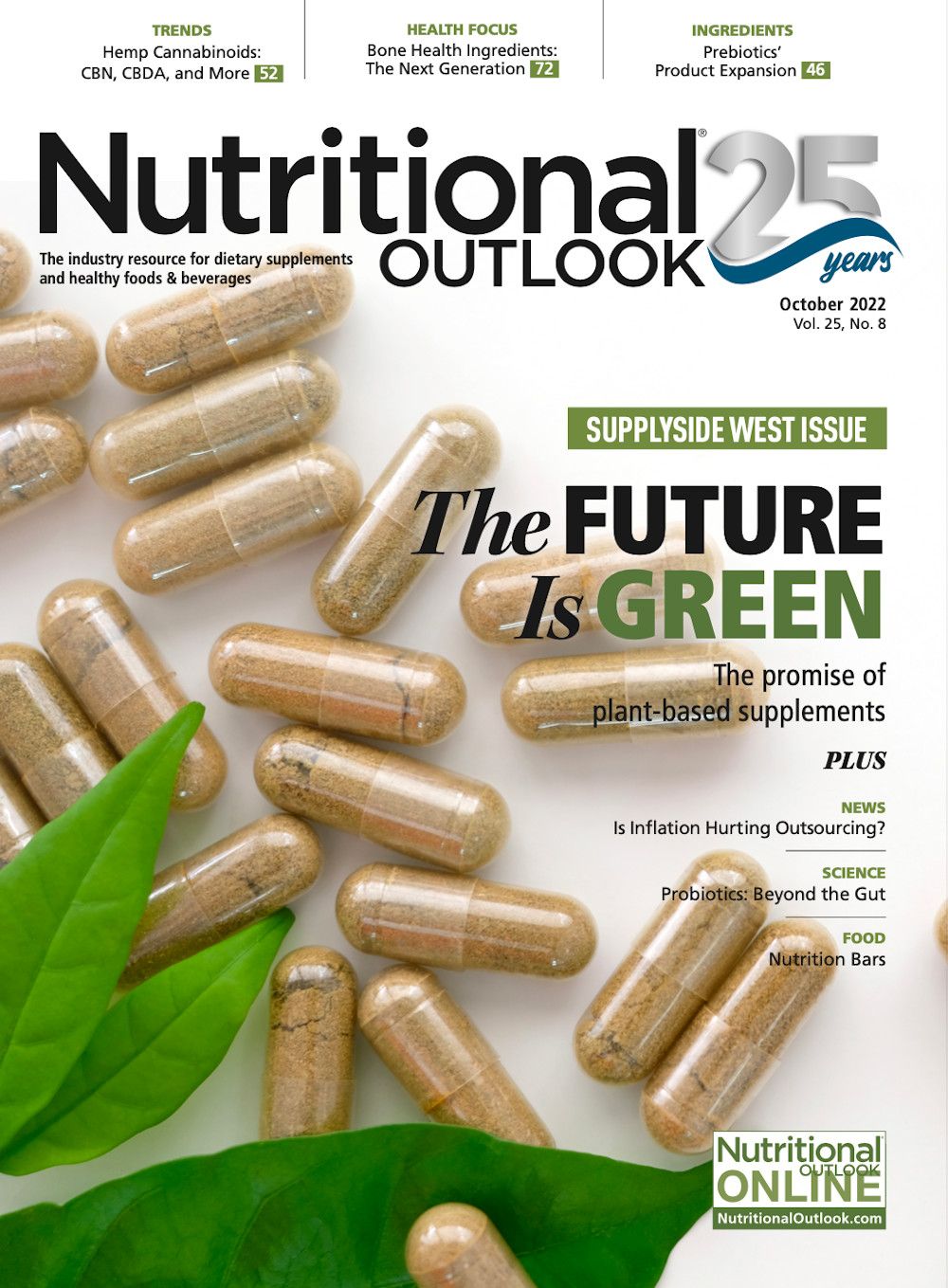
Prinova acquires Aplinova to further increase its footprint in Latin America
April 7th 2025Prinova has recently announced the acquisition of Brazilian ingredients distributor Aplinova, which is a provider of specialty ingredients for a range of market segments that include food, beverage, supplements, and personal care.




